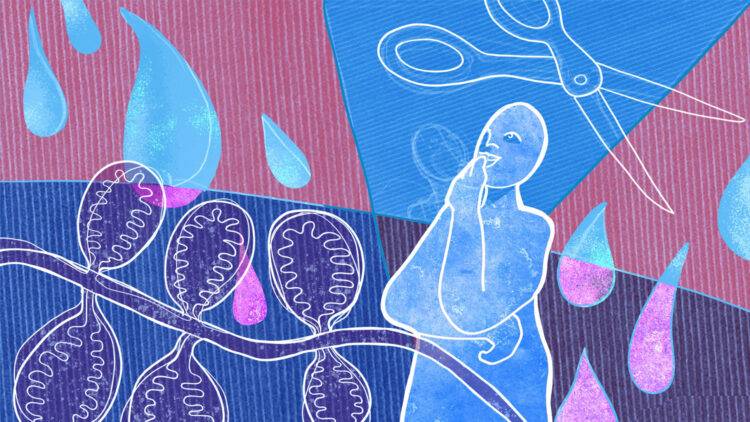Naoko Fujimoto breathes sensational color into the visual poem. Her latest book, “Glyph: Graphic Poetry=Trans. Sensory,” resembles a collection of intricate, interactive paintings that suspend all mediums just to be pasted back together in her own vision. But, at its core, each page contains a carefully crafted poem. There is no doubt that the images permeate from the words, making complete immersion unavoidable.
Fujimoto blends cutouts, original writing, drawings, paint, pastels, ink, handwritten notes, and more to create 45 distinct, finalized pieces on magazine size pages (8.5” x 11’). Each page presents its own personal history; its own world. The visual poems are mesmerizing and full of secrets. The visual pieces are presented with full disclosure. You are given no choice but to marvel at the vibrant, beautiful collections.
While reading the book, I felt shocked by the experience, as if I couldn’t compare it to another collection of poems. To read through “Glyph,” I needed to imagine myself walking through a gallery filled with exciting paintings. To get clarity, I had to first experience confusion. Fujimoto presents a newfound take on the visual poem that allows the readers to guide themselves through. The poem is suspended, and the reader with it.
Even though Fujimoto’s style is unapologetically visual, she does not abandon the verbal aspect of the poems. Fujimoto’s mastery over this form is her ability to treat the word as a medium itself, where the visuals emanate from.
Fujimoto writes that when she decided how to convey herself, she could not settle on a single material. The illustration and poetry would fall short without one another. Discussing the book, she writes “my preferred approach in the creative world does not confine itself to a single medium. It is an amalgamation of practices meant to engage all of our senses.” And that is exactly what she does in “Glyph.” When presented with the choice, Fujimoto boldly decides to take it all.
There is depth to these poems: a topography that lends itself to the reader. At first, it may feel as disorienting as looking at a new map for the first time, but once you calibrate, navigating the poems feels liberating. Fujimoto concocts a memory map where the reader can truly glimpse into her past, soak it in, and then move graciously to the next page. Although the poems appear fractured by lines, cutouts, and cropped images, there is always a bridge for the reader. There seem to be no dead ends throughout the entire collection. The book tethers everything together — from growing up Japanese in America, to daughterhood, to romance, to the horrors of war.
The poem “Lunch Time Atlas” begins with a simple line, “Take My Hand,” that reverberates across the entire collection. If the reader experiences doubt or feels an urge to double back, Fujimoto grabs them and holds them in these scattered memories. This is a journey not meant to be taken alone, and any reader will feel comforted by this. Fujimoto’s poems weave together subtly, carrying the reader effortlessly from memory to memory; from poem to poem. The content, form, and pace of her poems provides enough momentum to drift from page to page without accelerating.
Fujimoto’s poems give shockingly clear insight into her memory through fractal moments and environments that reawaken their own significance. A delightful mixture of playfulness and honesty defines these poems, resulting in a collection that suspends all boundaries between spaces, memories, senses, and mediums. More than anything, Fujimoto’s “Glyph” forges an inspiring visual poetic style that leaves nothing on the table, because it’s all on the page.
Glyph: Graphic Poetry=Trans. Sensory, by Naoko Fujimoto. Tupelo Press, 2021






















